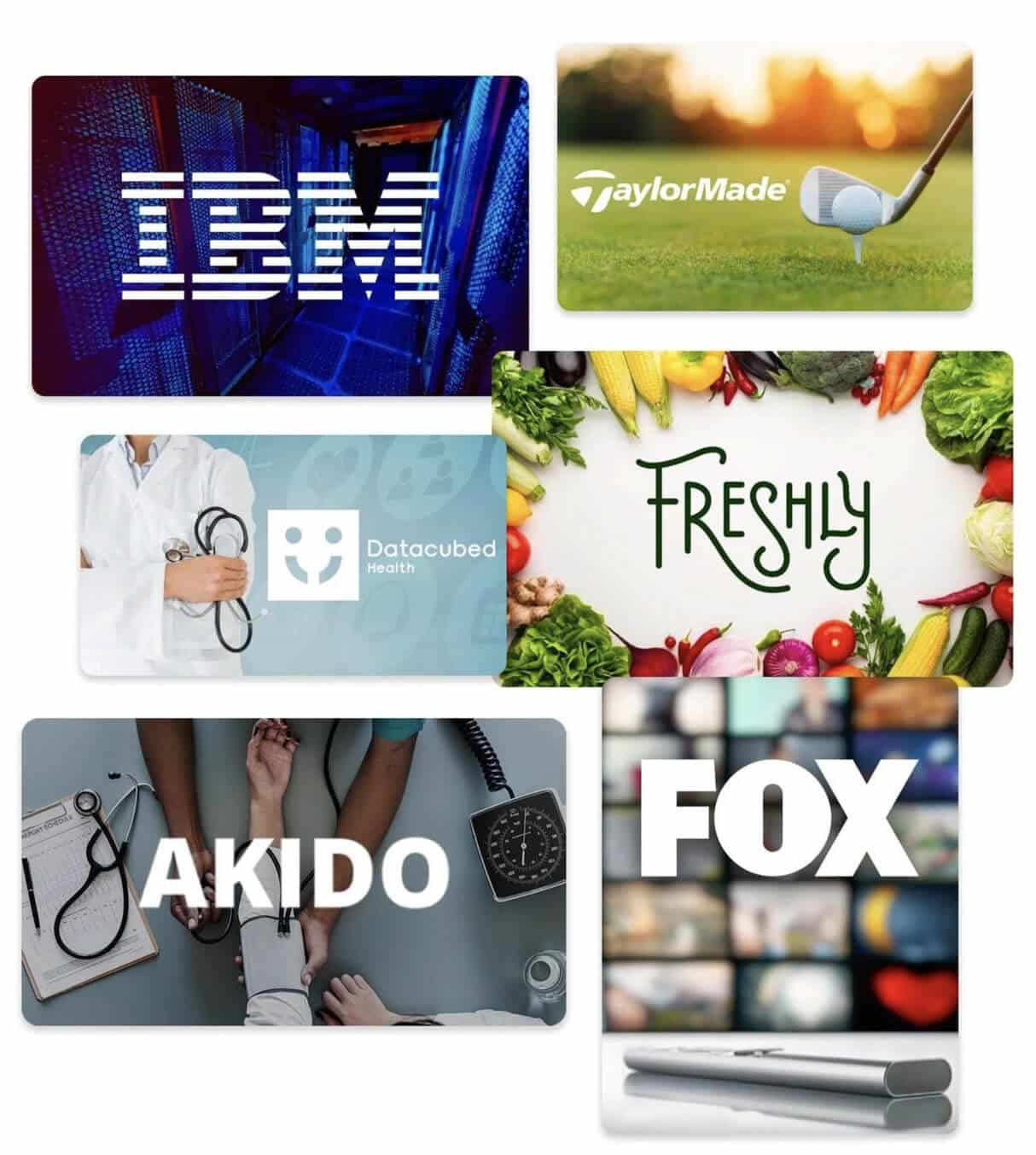Types of APIs or API, Differences, and Protocols
Understanding the different types of APIs and how they can help you streamline your software development process.

Everything you need to know about
Types of APIs
APIs, or Application Programming Interfaces, have become ubiquitous in modern technology. They enable developers to create software communicating with other software, services, or devices, allowing seamless integration and functionality. APIs have been used for decades, but their popularity has skyrocketed with the rise of cloud computing and mobile devices. This article will explore the various types of APIs and their functions.
REST APIs
REST, or Representational State Transfer, is a software architecture style commonly used for building web APIs. REST APIs use HTTP requests to communicate between clients and servers. They usually return data in JSON or XML format. They are called “representational” because they represent resources on the server. The state of those resources can be transferred between client and server using HTTP methods like GET, POST, PUT, DELETE, and PATCH.
REST APIs are widely used because they are easy to implement and understand. They are also scalable and performant, making them an ideal choice for web-based applications.
SOAP APIs
SOAP, or Simple Object Access Protocol, is another style of software architecture used for building APIs. SOAP APIs format requests and responses using XML and communicate over HTTP or HTTPS. SOAP is a more complex and verbose protocol than REST, which can be more challenging to implement and understand.
SOAP APIs are commonly used in enterprise applications because they offer more robust security and transactional support than REST APIs. However, they are less performant, scalable, and widely supported than REST APIs (1).
“SOAP API has over 20 different calls that allow you to maintain passwords, perform searches and complete other tasks. It can also use any language that supports web services, meaning that web developers who use a range of languages can work with this API.“
– Indeed
Our Executive Team

Common Industries we provide Types of APIs Services:
Healthcare & Life Sciences
SaaS & Information Services
Manufacturing
Financial Services & FinTech
Retail & E-Commerce
Insurance
Logistics & Automotive
Travel & Hospitality
You need to know:
GraphQL APIs
GraphQL is a query language for APIs that Facebook developed. It allows clients to request only the data they need, which can reduce network traffic and improve performance. GraphQL APIs are designed to be flexible and adaptable, allowing developers to evolve the API schema over time without breaking existing clients.
GraphQL APIs are gaining popularity because of their ability to provide tailored responses to client requests, which can improve the user experience of web and mobile applications. However, they require more work to implement than REST APIs and may only be suitable for some use cases.
Open APIs
Open APIs, also known as public APIs, are available. Developers often use them to build third-party applications and services that interact with a particular platform or service. Open APIs can be used to extend the functionality of a medium or service, and they can enable innovation and collaboration among developers.
Examples of open APIs include the Twitter API, the Google Maps API, and the Spotify API. These APIs enable developers to build applications that leverage the data and functionality provided by these platforms.


Common Industries we provide Types of APIs Services:

COST-EFFECTIVE DEVELOPERS
Our Software Developers and Engineers cost
on average $45 to $65 per hour

HIGHEST QUALITY DEDICATED TEAMS
Access to the TOP 1% of Nearshore Software Development resources in Latin America

TIME SENSITIVE DEVELOPMENT
Sonatafy’s Nearshore Talent Acquisition can place qualified Software Engineering teams in as quick as 2 weeks
What you need to know:
Internal APIs
Internal APIs, or private APIs, are used within an organization. They often connect different systems or services within an organization, enabling them to share data and functionality. Internal APIs can improve the efficiency and effectiveness of an organization by reducing duplication of effort and enabling better data management.
Examples of internal APIs include APIs used by a company’s HR system to connect with its payroll system or by a retail company to connect its online and in-store inventory systems.
Partner APIs
Partner APIs are APIs that are used to enable communication between two organizations. They are often used to share data or functionality between companies working together on projects or initiatives. Partner APIs can facilitate collaboration and innovation between organizations and reduce the friction of transferring data between different systems.
Examples of partner APIs include APIs used by a financial institution to share customer data with a fintech company or APIs used by a transportation company to share data with a logistics partner.

Interested In Working With Sonatafy?
What you need to know:
Composite APIs
Composite APIs are APIs that are composed of multiple underlying APIs. They often aggregate data or functionality from various sources into a single API that clients can consume. Composite APIs can simplify the client-side development process by providing a unified interface to multiple underlying APIs.
Examples of composite APIs include APIs used by travel booking websites to aggregate flight, hotel, and rental car data from multiple sources or by healthcare providers to aggregate patient data from various electronic health record systems.
Webhooks
Webhooks are a type of API that enables real-time communication between two systems. They allow one system to notify another method when a specific event occurs, such as a user creating a new account or placing a new order. Webhooks send an HTTP request to a preconfigured endpoint when the event occurs. The receiving system can then process the request and take appropriate action.
Webhooks are commonly used in various e-commerce, social media, and finance applications. They can be used to automate processes and improve the efficiency of systems by reducing the need for manual intervention.
Messaging APIs
Messaging APIs are a type of API that enables communication between different messaging platforms or services. They allow developers to build applications that send and receive messages from other platforms, such as SMS, WhatsApp, or Facebook Messenger. Messaging APIs enable businesses to communicate with customers more effectively and efficiently. They can also help new use cases, such as chatbots and automated customer service (2).
“Requesting services publish (PUT in REST terminology) a message to request processing, while the providing service subscribes (GET in REST terminology) to the message to complete the processing.”
– IBM
Examples of messaging APIs include the Twilio API, which enables developers to send and receive SMS messages, and the Facebook Messenger API, which allows developers to build chatbots for the Facebook Messenger platform.
APIs are a crucial component of modern technology, enabling developers to build software communicating with other software, services, or devices. There are many different APIs, each with strengths and weaknesses. REST APIs are widely used because they are easy to implement and scalable. In contrast, SOAP APIs are more robust but less performant. GraphQL APIs offer tailored responses to client requests but require more work.
In contrast, open APIs enable collaboration and innovation among developers. Internal APIs are used within organizations to improve efficiency, while partner APIs allow communication between organizations. Composite APIs simplify the client-side development process by providing a unified interface to multiple underlying APIs. At the same time, webhooks enable real-time communication between different systems. Finally, messaging APIs allow communication between other messaging platforms or services, enabling businesses to communicate with customers more effectively and efficiently.
APIs have become the backbone of modern software development in today’s digital world. APIs allow developers to access and use data, functionality, and services from other applications and systems, enabling them to build more sophisticated and robust applications. APIs come in various types, each with its unique characteristics and benefits. This article will explore the different kinds of APIs in more detail.
%
TOP NEARSHORE TALENT
%
ATTRITION RATE
%
ENGLISH PROFICIENCY
RESOURCES DEPLOYED
Frequently asked questions about
Types of APIs and Mobile APIs
Mobile APIs are a type of API explicitly designed for mobile applications. Mobile APIs allow developers to access the device’s hardware and software capabilities, such as the camera, GPS, and contacts, enabling them to build more sophisticated and robust applications.
Mobile APIs are essential for building mobile applications that provide rich user experiences and access to device-specific features. They are commonly used in social media, gaming, and e-commerce.
APIs are a crucial part of modern software development, enabling applications to communicate with each other and access data and services from other systems. There are many different APIs, each with unique characteristics and benefits. Developers must choose the correct API for their application based on its requirements, functionality, and scalability.
REST APIs are the most commonly used type of API. They are an excellent choice for building modern web and mobile applications. SOAP APIs are more complex but offer more robust functionality. In contrast, GraphQL APIs provide flexibility and allow clients to request custom responses based on their needs. Open APIs are publicly available and promote collaboration and innovation among developers, while internal APIs and partner APIs facilitate communication within and between organizations. Composite APIs combine multiple underlying APIs into a single API, while webhooks enable real-time communication between systems. Messaging and mobile APIs are designed specifically for messaging and mobile applications.
By understanding the different types of APIs and their unique characteristics, developers can build more sophisticated and robust applications that meet the needs of their users and their business requirements.
What is an API?
API stands for Application Programming Interface, a set of protocols, tools, and standards for building software applications. APIs allow different applications to communicate with each other, exchange data and functionality, and work together seamlessly. An API defines a set of rules software developers can follow to build applications interacting with other applications or services.
Click here to learn more about this common question: “Is API a Web Service?”
APIs can access data and services from other systems, perform complex operations, and automate workflows. APIs are essential for building modern web and mobile applications, enabling them to communicate with other applications and services over the Internet.
Main types of Web APIs
Web APIs are APIs that are designed specifically for web applications that can be leveraged by web application development services. They allow developers to access data and functionality from other web applications and services, enabling them to build more powerful and sophisticated applications. There are two main types of web APIs:
REST APIs
REST (Representational State Transfer) is a web API that uses HTTP protocol to communicate between applications. REST APIs are designed to be simple, flexible, and scalable, making them an excellent choice for building modern web and mobile applications. REST APIs use standard HTTP methods such as GET, POST, PUT, DELETE, and PATCH to access and manipulate resources. REST APIs are stateless, meaning that each request to the server contains all the information necessary to process the request, making them faster and more reliable.
SOAP APIs
SOAP (Simple Object Access Protocol) is a web API that uses XML to communicate between applications. SOAP APIs are more complex than REST APIs but offer more robust functionality and support for transactions, security, and error handling. SOAP APIs use standard SOAP messages to send and receive data, often requiring additional tools and frameworks to build and deploy.
What are the differences between SOAP and REST?
The main differences between SOAP and REST APIs are:
- Protocol: SOAP APIs use XML protocol, while REST APIs use HTTP protocol.
- Complexity: SOAP APIs are more complex than REST APIs and require more tools and frameworks to build and deploy.
- Functionality: SOAP APIs offer more robust functionality and support for transactions, security, and error handling, while REST APIs are simple and flexible.
- Performance: REST APIs are faster and more reliable than SOAP APIs because they are stateless, and each request contains all the information necessary to process the request.
Types of APIs by Category
There are several different types of APIs based on their category:
- Open APIs: Open APIs are publicly available and promote collaboration and innovation among developers. Open APIs are often used to build mashups, which combine data and functionality from multiple sources to create new applications.
- Partner APIs: Partner APIs are explicitly designed for use by partners and trusted third-party developers. Partner APIs enable organizations to share data and functionality with their partners while controlling who can access their data.
- Internal APIs are used within an organization to facilitate communication and collaboration between different teams and systems. Internal APIs enable organizations to build and deploy applications faster and more efficiently by reusing existing functionality and data.
- Composite APIs: Composite APIs combine multiple underlying APIs into a single API. Composite APIs enable developers to access data and functionality from various sources using a single API, simplifying development and reducing complexity.
Types of API Architectures
There are several different types of API architectures:
- REST: REST is an API architecture that uses HTTP protocol to communicate between applications. REST APIs are designed to be simple, flexible, and scalable, making them an excellent choice for building modern web and mobile applications.
- SOAP: SOAP is a type of API architecture that uses XML protocol to communicate between applications. SOAP APIs are more complex than REST APIs but offer more robust functionality and support for transactions, security, and error handling.
- RPC: RPC (Remote Procedure Call) is an API architecture that allows a client application to call a function or procedure on a remote server. RPC APIs are often used to integrate legacy systems or to perform complex operations that cannot be easily accomplished using REST or SOAP APIs.
Choosing the Right Type of API
Choosing the correct type of API depends on several factors, including the needs of your application, the functionality you require, and the resources you have available. Here are some tips to help you choose the right type of API:
- Consider your application’s needs: Choose an API that meets the needs of your application. If you need a simple and flexible API, consider using a REST API. If you require more robust functionality and support for transactions and security, consider using a SOAP API.
- Consider your available resources: Choose an API that you have the resources to build and maintain. If you have limited resources, consider using an open API or a partner API. If you have more resources, consider creating an internal API or a composite API.
- Consider the audience for your API: Choose an appropriate API for your audience. If your API is public-facing, consider using an open API or a partner API. If your API is internal-facing, consider using an internal API or a composite API.
Web APIs, API Types
Web APIs are APIs that are designed specifically for web applications. There are several different types of web APIs, including:
- REST APIs: REST APIs are simple, flexible, and scalable, making them an excellent choice for building modern web and mobile applications.
- SOAP APIs: SOAP APIs are more complex than REST APIs but offer more robust functionality and support for transactions, security, and error handling.
- RPC APIs: RPC APIs allow a client application to call a function or procedure on a remote server, making them a good choice for integrating legacy systems or performing complex operations.
API Type by Audience
APIs can be categorized by their intended audience:
- Public APIs: Public APIs are available to anyone and are often used to promote collaboration and innovation among developers.
- Partner APIs: Partner APIs are explicitly designed for use by partners and trusted third-party developers.
- Internal APIs are used within an organization to facilitate communication and collaboration between different teams and systems.
API Types by Architecture
APIs can also be categorized by their architecture:
- REST APIs: REST APIs use HTTP protocol to communicate between applications and are designed to be simple, flexible, and scalable.
- SOAP APIs: SOAP APIs use XML protocol to communicate between applications and offer more robust functionality and support for transactions, security, and error handling.
- RPC APIs: RPC APIs allow a client application to call a function or procedure on a remote server, making them a good choice for integrating legacy systems or performing complex operations.
API Protocols
APIs can also be categorized by their protocol:
- HTTP APIs: HTTP APIs use HTTP protocol to communicate between applications and are often used to build REST APIs.
- XML APIs: XML APIs use XML protocol to communicate between applications and are often used to create SOAP APIs.
- JSON APIs: JSON APIs use JSON protocol to communicate between applications and are often used to create REST APIs.
GraphQL APIs
GraphQL is a newer type of API that is growing in popularity. GraphQL is a query language and runtime for APIs that allow clients to define the required data structure, enabling more efficient and flexible communication between applications. GraphQL APIs are often used to build modern web and mobile applications that require real-time updates and complex data structures (3).
“Send a GraphQL query to your API and get exactly what you need, nothing more and nothing less. GraphQL queries always return predictable results. Apps using GraphQL are fast and stable because they control the data they get, not the server.”
– GraphQL
In conclusion, APIs are an essential part of modern software development and enable applications to communicate with each other, exchange data and functionality, and work together seamlessly. There are several different types of APIs, each with advantages and disadvantages. Choosing the correct type of API depends on several factors, including the needs of your application, the resources you have available, and the audience for your API.
Web APIs, such as REST, SOAP, and RPC APIs, are explicitly designed for web applications and offer varying levels of complexity, functionality, and scalability. REST APIs are often suitable for building modern web and mobile applications. In contrast, SOAP APIs are more complex but offer more robust functionality and support for transactions, security, and error handling. RPC APIs help integrate legacy systems or perform complex operations.
APIs can also be categorized by their intended audiences, such as public, partner, and internal APIs. Public APIs are available to anyone and promote collaboration and innovation among developers. In contrast, partner APIs are designed for use by trusted third-party developers. Internal APIs are used within an organization to facilitate communication and collaboration between different teams and systems.
APIs can also be categorized by their architecture, such as REST, SOAP, and RPC APIs, as well as by their protocol, such as HTTP, XML, and JSON APIs. GraphQL APIs are a newer type of API that is growing in popularity and offers more efficient and flexible communication between applications.
Understanding the different APIs and their advantages and disadvantages is crucial for building robust and efficient applications that can communicate and work seamlessly with others. Whether you are making a public-facing application, a partner-facing application, or an internal application, choosing the right type of API is essential for meeting the needs of your application, the resources you have available, and the audience for your API.
Types of APIs Companies
Awards & Recognitions
Helping take our clients’ software development businesses to the next level has been quite an experience, and we are not slowing down any time soon. Providing a memorable experience and far surpassing our customers’ software development and solutions goals is one of the most rewarding experiences of our company to date.
We’re ready to start helping your company grow with our industry-leading custom software development solution, are you?

Earning Trust & Loyalty for our Software Development Services
Our executive team proudly provides complete software development solutions in the healthcare, SaaS, Manufacturing, and FinTech fields from deployment to completion.
Our client-centric software development solutions have made us the healthcare app development provider of choice for clients such as Akido Labs, Datacubed Health, Sema Technologies, and Semantic AI, among others. With thousands of software development engineers deployed to date, clients love our personalized high-touch approach.
With high-quality delivery web development services and strong customer support and management, we give you the ability to focus on business decisions rather than software development issues.
Sonatafy Technology services can dramatically
improve the Types of APIs Services.
Our Software Development Clients Have Spoken.

“We increased our productivity and quality by extending our team with Sonatafy resources. They are part of our ‘family’. Their passion, dedication, experience, and wisdom has been nothing short of impressive.”

“We have been using Sonatafy for software team augmentation. Their vetting process is extremely through and has saved us a huge amount of time. All of the candidates presented have been outstanding and have fit into our team perfectly.”

“The Sonatafy team consists of members who are dedicated, personable, and attentive. They will search tirelessly to match the right talent to meet your skills and budgetary requirements. Regardless of your situation, you cannot go wrong with Sonatafy.”

“The Sonatafy team has continually impressed us with the quality of their engineers — we have found excellent engineering leaders in their contractors who have helped tremendously. They really are an integral part of our team, and we’re very thankful for Sonatafy’s professional leadership in this space. I heartily recommend them to augment anyone’s teams or projects.”

“At IMAIGE Analytics, we are driven by purpose and outcomes. Sonatafy has been the exact type of partner we need to help us deliver on both. They’ve found solutions specific to our purpose and needs, their resources have contributed like long time team members from day one and they seem dedicated to progressively better outcomes from the start. Thanks to the team and to Steve for taking the time to make our business better!”

“The entire team at Sonatafy greatly surpassed our expectations. We require very specific skill sets and the team did an incredible job of screening and selecting top – notch candidates. Sonatafy’s attention to detail, professionalism, open communication, and collaboration with us ensured that we found highly skilled talent that fit seamlessly into our company’s culture. I can’t recommend them strongly enough.”

“Sonatafy makes it easy to find great and professional talent, with their help we have been able to solidify our team. Their process and communication is a refresher and a weight off our shoulders.”

I’ve used Sonatafy Technologies for the last 5 + years at several of my companies both small and large, in a staff augmentation capacity. I have been consistently impressed with the high – quality of technical skills as well as the team member’s high level of engagement and dedication to my projects. I’ve always considered my dedicated Sonatafy resources as members of my team , and their contributions and performance has been excellent. The combination of high performance and afford ability has been an outstanding benefit , and I would highly recommend using Sonatafy Technologies as your near shore technology partner.
What are
The 4 types of API?
The four main types of APIs are web APIs, web service APIs, system APIs, and program APIs. Here are some examples of web services in action (https://sonatafy.com/web-service-example/)
What are the 6 types of API?
There are several ways to categorize APIs, but six common types include open APIs, partner APIs, internal APIs, composite APIs, REST APIs, and SOAP APIs.
What are 2 types of APIs?
Two types of APIs are REST APIs and SOAP APIs.
What are REST API and SOAP API? REST (Representational State Transfer) and SOAP (Simple Object Access Protocol) are web service APIs that enable communication between different applications over the Internet. REST APIs use a simpler, more lightweight architecture based on HTTP. In contrast, SOAP APIs use a more complex XML-based protocol to enable robust functionality and support for transactions, security, and error handling.
Types of REST API: There are several REST APIs, including CRUD (Create, Read, Update, Delete) APIs, Search APIs, and Batch APIs. CRUD APIs are used for primary data manipulation operations, such as adding, retrieving, updating, and deleting resources. Search APIs are used for searching through large data sets, and Batch APIs perform multiple operations in a single request.
API protocol example: API protocols are the set of rules and standards that define how applications communicate with each other over the Internet. Some common examples of API protocols include HTTP (Hypertext Transfer Protocol), HTTPS (HTTP Secure), XML (Extensible Markup Language), JSON (JavaScript Object Notation), and SOAP (Simple Object Access Protocol).
SOAP API: SOAP (Simple Object Access Protocol) is a type of web service API that uses XML as its messaging protocol. It is a more complex protocol than REST, but it offers more robust functionality and support for transactions, security, and error handling. SOAP APIs are commonly used in enterprise applications, such as banking and finance systems, where safety and reliability are critical.
Web API: Web APIs are a type of API that is designed specifically for use with web applications. They enable web applications to communicate with others and services over the Internet. Common web APIs include REST, SOAP, and RPC APIs.
APIs for developers: APIs are designed to make it easier to build applications and services by providing pre-built functionality and tools. These APIs can be used to integrate third-party services, add new features and functionality to applications, and streamline development workflows. Some examples of APIs for developers include payment APIs, social media APIs, and geolocation APIs.
RPC API: RPC (Remote Procedure Call) is a type of API that enables one application to execute code on another application or system. It is commonly used for integrating legacy systems or performing complex operations that cannot be accomplished through standard web APIs (4).
“It is also called a subroutine call or a function call. It is based on conventional local procedure calling so that the called procedure need not exist in the very same address space as the calling procedure executes.”
– Geeks for Geeks
Partner API: Partner APIs are a type of API that is designed specifically for use by trusted third-party developers. They often enable collaboration and integration between applications and services, such as marketing automation platforms and customer relationship management systems.
API methods: API methods are the commands or functions that can interact with an API. They are used to perform various operations, such as retrieving data, updating records, and executing complex operations. Some standard API methods include GET (to retrieve data), POST (to create new records), PUT (to update existing records), and DELETE (to delete records).
References:
- SOAP API has over 20 different calls that allow you to maintain passwords, perform searches and complete other tasks. It can also use any language that supports web services, meaning that web developers who use a range of languages can work with this API. – Indeed Quote
https://www.indeed.com/career-advice/career-development/what-is-soap-api#:~:text=SOAP%20API%2C%20or%20simple%20object,Extensible%20Markup%20Language%20(XML). - Requesting services publish (PUT in REST terminology) a message to request processing, while the providing service subscribes (GET in REST terminology) to the message to complete the processing.– IBM Quote
https://developer.ibm.com/articles/introduction-apis-and-messaging/ - Send a GraphQL query to your API and get exactly what you need, nothing more and nothing less. GraphQL queries always return predictable results. Apps using GraphQL are fast and stable because they control the data they get, not the server. – GraphQL Quote
https://graphql.org/ - It is also called a subroutine call or a function call. It is based on conventional local procedure calling so that the called procedure need not exist in the very same address space as the calling procedure executes. – Geeks for Geeks Quote
https://www.geeksforgeeks.org/difference-between-rest-api-and-rpc-api/









